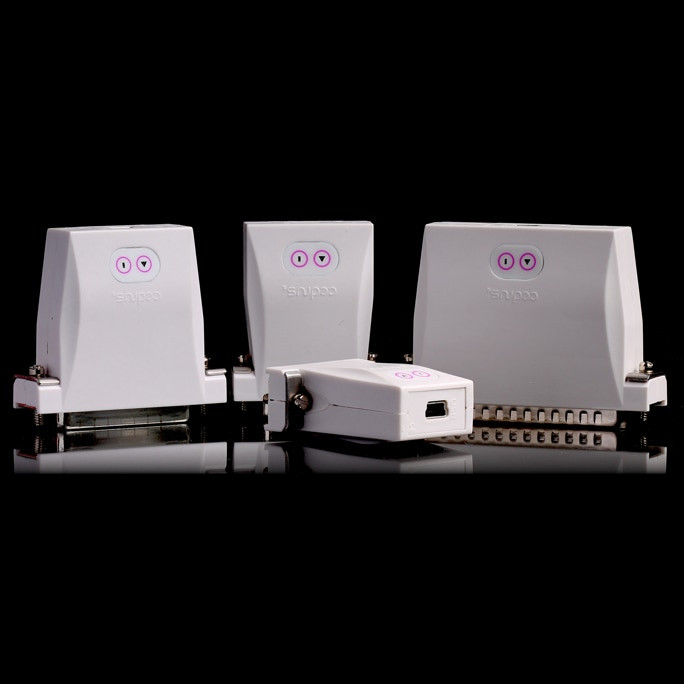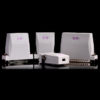Product Enquiry
If you would like to send us an enquiry about this product, please click the button below, fill in the form and submit.
Product Enquiry![]()
What is it?
c-pod makes it easy to send event markers from your computer to recording devices, and to do so affordably and with precision. It comes ready to plug into your specific research instrument.
Why?
To make sense of your data by overlaying event markers on them.
Instantly Compatible
c-pod is a true plug-and-play solution: it is delivered with everything you need to connect to your particular model of EEG, eye tracker, NIR, or other recording instrument.
| Models Available For | ||
| ABM | AD Instruments | ANT Neuro |
| Biopac | Biosemi | Brain Products |
| EGI | iWorx | Mangold |
| MindWare | Neuroscan | NIRx |
| Parallel port | SMI | Tobii Spectrum |
2ms Precision. Jitter Free.
c-pod delivers your event markers with precision because it is jitter free when used with our open source Python or C++ libraries. Delay is guaranteed to be 2 milliseconds exactly, every time.
We spared no expense and added a separate USB interface chip that we knew would give us the precision needed.
Power Packedc-pod is small but packs a real punch. Its 32-bit microprocessor makes possible the following features: Async Output Scheduler Pattern Generator |
|
It’s All in the Family
Researchers have relied on StimTracker since 2008 for detecting events and sending event markers via USB. When you only need to send event markers via USB, c–pod offers that capability at a fraction of the cost.
![]()
| m-pod + response pad | c-pod | StimTracker | |
| Send Pulses Asynchronously | |||
| Signal / Pattern Generator | No | ||
| Pulse Scheduling Feature | No | ||
| Marks Onset of Participant Key Presses | No | No | |
| Marks Onset of Visual Stimuli | No | ||
| Marks Onset Of Auditory Stimuli | No | No | |
| Marks Onset of External TTL Input | No | No | |
| Voice Key | No | No | |
| Number of Simultaneous Outputs | 1 | 1 | 2 |
Software Support
Important: some software packages can deliver jitter free performance, but not all.
Jitter Free Software Support
SuperLab 6
Version 6 will be a free upgrade to all SuperLab 5 license owners.
C++ Library
Python Library
Others
E-Prime
We offer an E-Basic code sample. Precision is 5 to 8ms.
Easy to Install and Use
c–pod requires the installation of a USB driver, a five minute task. Each c–pod model comes with the right connector size, gender, and pin assignments. This makes it straightforward to connect to your EEG, eye tracker, or other recording equipment.
There are two LED lights on c–pod. The one on the right (🁢) confirms a connection to the computer. The one on the left (▲) lights up every time an event marker is sent.

The Magic
| With c–pod, you can focus on your research instead of wasting time making bits of your lab work together; we take care of the connection details.
We also take care of timing and deliver guaranteed jitter free performance. But the real magic is hidden inside. When you buy c–pod, you are getting a computer with a speedy 32-bit engine, humming with useful, well polished software. Here is what it can do for you. |
|
Asynchronous OutputWith a traditional I/O card like the ones from Measurement Computing or National Instruments, a software program that wants to send a pulse needs to wait for the duration of the pulse before it can resume its own work. Imagine sending a postcard to a friend and then not being able to do anything else until that postcard is delivered. It’s a lot of wasted time. This is synchronous delivery. c–pod can deliver signals asynchronously: an application sends it a command that includes the pulse duration and then resume its own work, e.g. to present a stimulus or look for participant response. c–pod takes care of completing the pulse delivery. |
|
Schedulerc–pod takes the idea of async output a step further. Instead of delivering a pulse now, why not deliver it later? Better yet, why not deliver multiple pulses later? This turns out to be a useful feature that answers the following question: when presenting a movie or sound, how can I mark certain points precisely while it is playing? With the scheduling feature, you can preload c–pod with a list of times when a pulse should be delivered, the length of the pulse, and the output line(s) that it should be delivered on. A subsequent command can be sent at the onset of the movie or sound to start executing the schedule. |
|
Pattern Generationc–pod can function as a pattern generator as well, sending periodic pulses out on an output line that you choose, or even pulses of different periods on multiple output lines. This is handy for applications that require strobing, or where the intensity of light or a motor is controlled using pulse width modulation (PWM). |
|
Mixed OutputAnd more: the features described above are not mutually exclusive. While a schedule is being executed on, say, output lines 1, 2, and 3, you can still send an async pulse command at any time on the remaining lines 4 through 8. Similarly, while a pattern is being generated on some lines, you can send an async pulse command on the remaining lines. c–pod will not skip a beat. |
|
It’s a ComputerCedrus has been delivering psychology research solutions since 1991 – more than a quarter century. It has been fun watching the market evolve. If new requirements come along, the software that powers c–pod can be easily updated. |




